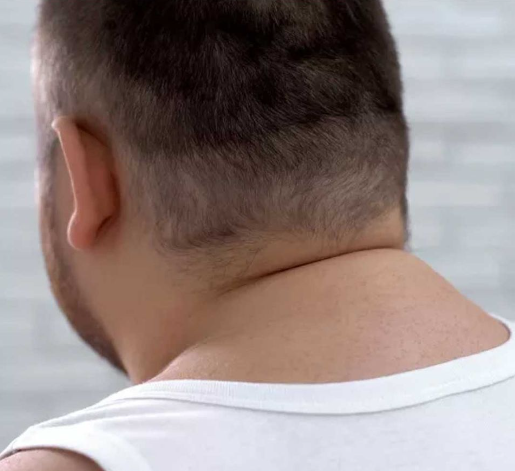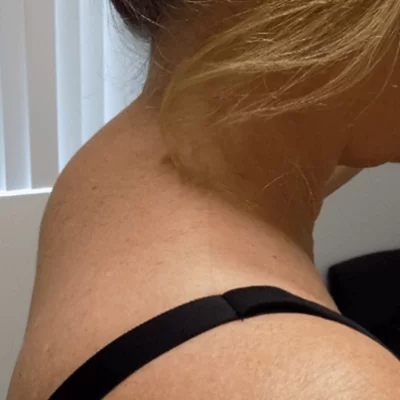A buffalo hump might sound like a term from a wildlife documentary, but it’s a real condition that can cause both physical and emotional discomfort. This noticeable accumulation of fat at the back of the neck, between the shoulders, can be a sign of underlying health issues. Understanding its causes and finding the right solution can help you take control of your health and confidence. Let’s dive into what a buffalo hump is, why it happens, and what you can do about it.
What Is a Buffalo Hump and Why Does It Happen?

A buffalo hump refers to the buildup of fat on the upper back and neck area. While it may seem like just a cosmetic issue, it’s often linked to deeper health concerns. This condition is typically a symptom, not a standalone illness, and treating it involves addressing its root cause.
Some common reasons for developing a buffalo hump include:
- Prolonged use of corticosteroids: These medications can alter fat distribution in the body.
- Cushing’s syndrome: A hormonal disorder caused by high cortisol levels.
- Obesity: Excess fat can accumulate in specific areas, including the neck.
- Poor posture: Slouching can accentuate the appearance of a hump.
- Other medical conditions: Disorders like osteoporosis and lipodystrophy can lead to abnormal fat buildup.
Understanding why a buffalo hump develops is key to treating and preventing it.
Medical Conditions Associated with Buffalo Humps
A buffalo hump may be a warning sign of underlying health issues. These conditions can directly or indirectly lead to the accumulation of fat in the neck area. Let’s explore some of the common culprits.
- Cushing’s Syndrome: This condition results from excessive cortisol, often due to stress, medication, or tumors. Symptoms include weight gain, thinning skin, and high blood pressure.
- Osteoporosis: Weak bones can cause spinal curvature, making a buffalo hump more prominent.
- Lipodystrophy: Abnormal fat distribution is a hallmark of this condition, sometimes seen in people undergoing certain medical treatments.
If you suspect your buffalo hump is linked to one of these conditions, consult a healthcare professional for a thorough evaluation.
Symptoms and Signs: How to Spot a Buffalo Hump
Beyond the visible fat accumulation, a buffalo hump might be accompanied by other symptoms that point to an underlying issue. Here’s what to watch for:
- Unexplained weight gain, particularly in the upper body.
- High blood pressure or elevated blood sugar levels.
- Muscle weakness or fatigue.
- Thinning skin or easy bruising.
These symptoms, especially when paired with the hump, may indicate conditions like Cushing’s syndrome or metabolic disorders. Early recognition can lead to better outcomes, so don’t ignore these signs.
Diagnosing a Buffalo Hump

The first step in addressing a buffalo hump is getting an accurate diagnosis. A healthcare provider will typically:
- Perform a physical examination: Assessing the size and texture of the hump.
- Review your medical history: Analyzing any medications or past health issues.
- Order tests: Blood tests to check hormone levels and imaging scans (like X-rays or MRIs) to evaluate fat distribution or bone structure.
This comprehensive approach ensures the underlying cause is identified, guiding the appropriate treatment plan.
Treatment Options: From Lifestyle Changes to Medical Interventions
Treating a buffalo hump depends on its root cause. The following are some effective strategies:
- Lifestyle Changes:
- Incorporate a balanced diet rich in lean proteins, fruits, and vegetables.
- Engage in exercises targeting weight loss and posture improvement, such as yoga or strength training.
- Adjusting Medications: If corticosteroids are the culprit, a doctor might reduce the dosage or suggest alternatives.
- Medical Treatments:
- For Cushing’s syndrome, treatments may include medications, surgery, or radiation therapy.
- Osteoporosis-related humps may improve with bone-strengthening drugs.
- Surgical Options: In severe cases, surgical removal of the fat tissue might be considered.
Remember, any treatment plan should be supervised by a medical professional to ensure safety and effectiveness.
Lifestyle Tips to Reduce and Prevent Buffalo Humps

Taking proactive steps in your daily life can help minimize the appearance of a buffalo hump and prevent its recurrence. Here’s how:
- Focus on Posture: Stand tall and sit straight. Use ergonomic furniture to support your back and neck.
- Stay Active: Regular exercise helps burn fat and build muscle. Activities like swimming, Pilates, or walking can make a big difference.
- Manage Stress: High cortisol levels can contribute to fat accumulation. Try meditation, deep breathing, or hobbies to keep stress in check.
- Eat Smart: A diet low in processed foods and high in whole, nutritious options can support weight management and overall health.
Consistency is key. Small, daily changes can lead to big improvements over time.
When to Seek Professional Help
Not all buffalo humps require medical intervention, but it’s wise to consult a doctor if:
- The hump grows rapidly or becomes painful.
- You experience additional symptoms like high blood pressure, severe fatigue, or frequent infections.
- It significantly affects your quality of life, physically or emotionally.
Early medical advice can prevent complications and provide clarity on the best course of action.
Living with a Buffalo Hump: Finding Support
Living with a buffalo hump can be tough, especially if it impacts your confidence. Seeking support can make all the difference. Here are a few tips:
- Join support groups where people share similar experiences.
- Work with a physical therapist to improve posture and alleviate discomfort.
- Talk to a counselor if the condition affects your mental health.
Remember, you’re not alone, and there are resources to help you cope with both the physical and emotional challenges.
Conclusion
A buffalo hump may seem like a minor issue at first, but it often holds clues to your overall health. From hormonal imbalances to lifestyle factors, understanding its causes can help you take control of the condition. With the right combination of medical care, lifestyle adjustments, and emotional support, you can reduce its appearance and feel more confident in your skin. Remember, early intervention is key, so don’t hesitate to seek help if you notice changes in your neck or back area.


